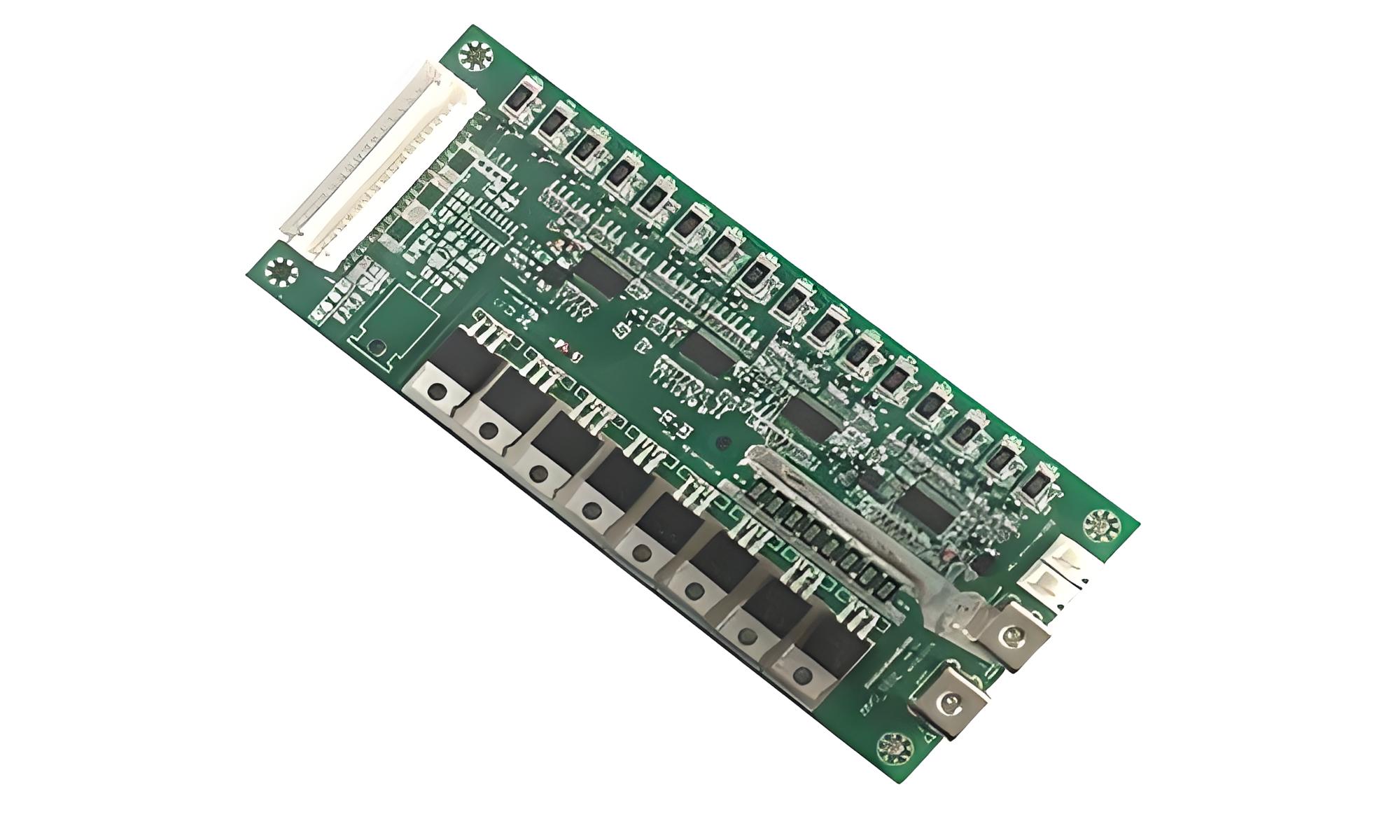Classification analysis of BMS battery protection board
As the core safety component of lithium battery packs, battery management systems (BMS) can be classified into various types of protection boards based on functional complexity, hardware architecture, and application scenarios. The following is a classification explanation from three dimensions: technical implementation, structural design, and application fields, and an analysis of the impact of core parameters on system security.

1、 Classified by functional complexity
Basic protective board
Core function: Integrate basic functions such as overcharge/overdischarge protection, overcurrent protection, short circuit protection, etc., and achieve fast response through hardware circuits.
Technical features:
Using dedicated protection chips (such as the Seiko S-8254 series), the individual cell voltage is monitored through a voltage comparator. When the voltage exceeds a threshold (such as the upper limit of 3.65V for lithium iron phosphate), the MOS transistor is triggered to cut off the circuit.
The protection delay time is usually in milliseconds, such as overcurrent protection delay<50ms, which is suitable for scenarios with high real-time requirements.
Application scenarios: Low cost demand areas such as power tools and low-speed electric vehicles.
Intelligent protective board
Core function: Add advanced functions such as State of Charge (SOC) estimation, balance management, and thermal runaway warning on top of basic protection.
Technical features:
By running the Kalman filter algorithm through MCU (such as STM32 series) to achieve SOC estimation, the error can be controlled within ± 3%.
Active balancing technology transfers the energy of high-capacity batteries to low-power batteries through DC-DC converters, with a balancing current of up to 1-2A, increasing the lifespan of the battery pack by more than 30%.
Application scenarios: fields with strict requirements for battery life and safety, such as electric vehicles and energy storage systems.
2、 Classified by hardware architecture
Centralized protection board
Architecture features: All sampling and control circuits are integrated on a single PCB, suitable for scenarios with fewer battery cells (such as<16 strings).
Technical parameters:
Sampling accuracy: Voltage detection resolution ≤ 1mV, current detection accuracy ≤ ± 0.5%.
Cost advantage: reduced by about 40% compared to distributed solutions, but limited scalability.
Typical applications: drone battery packs (6-12 strings), portable energy storage devices.
Distributed protection board
Architecture features: Adopting a "master control+slave control" structure, the slave control unit is responsible for individual voltage/temperature sampling, and the master control is responsible for global management, communicating through the CAN bus.
Technical parameters:
Communication speed: The CAN bus supports a speed of 1Mbps with a response delay of less than 10ms.
Scalability: Supports cascading of over 100 battery cells, suitable for large energy storage power stations (such as 1MWh systems).
Typical applications: electric vehicle battery pack (96-288 series), grid level energy storage system.
3、 Classified by application field
Power type protective plate
Performance requirements:
Support high rate charging and discharging (such as 3C continuous discharge), and the internal resistance of the MOS tube should be ≤ 1m Ω to reduce heat generation.
Integrated thermal runaway warning function, triggering an alarm 30 seconds in advance through temperature gradient analysis (when Δ T/Δ t>5 ℃/s).
Case: Tesla Model 3 battery pack adopts distributed BMS to achieve millisecond level balancing of 96 battery cells.
Energy storage protection board
Performance requirements:
Emphasize cycle life management, predict battery degradation through SOH (State of Health) estimation algorithm, and prompt replacement when capacity degradation reaches 80%.
Support economic optimization functions, such as automatic adjustment of charging and discharging strategies during peak and valley electricity price periods, to increase system revenue by more than 15%.
Case: Sunshine Power Energy Storage System adopts a three-level architecture BMS, with a management scale of 10MWh and an annual cycle life of>6000 times.
4、 The impact of core parameters on system security
Voltage sampling accuracy: An increase of 10mV in error may result in a deviation of 1-2% in SOC estimation, leading to the risk of overcharging.
Balance efficiency: The passive balance efficiency is only 5-10%, while the active balance efficiency can reach over 85%, directly affecting the consistency of the battery pack.
Communication reliability: In strong electromagnetic interference environments (such as near electric vehicle motors), the CAN bus error rate should be controlled below 10 ^ -12.
conclusion
The classification of BMS battery protection boards needs to be comprehensively considered based on technical implementation, hardware architecture, and application scenarios. The basic protection board achieves fast protection through hardware circuits, while the intelligent protection board relies on algorithms to improve management accuracy; Centralized architecture is suitable for small systems, while distributed architecture supports large-scale applications; The power type protection board emphasizes high magnification and thermal management, while the energy storage type protection board focuses on lifespan and economy. In the future, with the explosion of markets such as 48V mild hybrid systems and industrial and commercial energy storage, BMS will develop towards higher integration (such as SiC power device applications) and stronger intelligence (AI fault prediction), promoting the safety and economy of lithium battery systems to a higher level.
